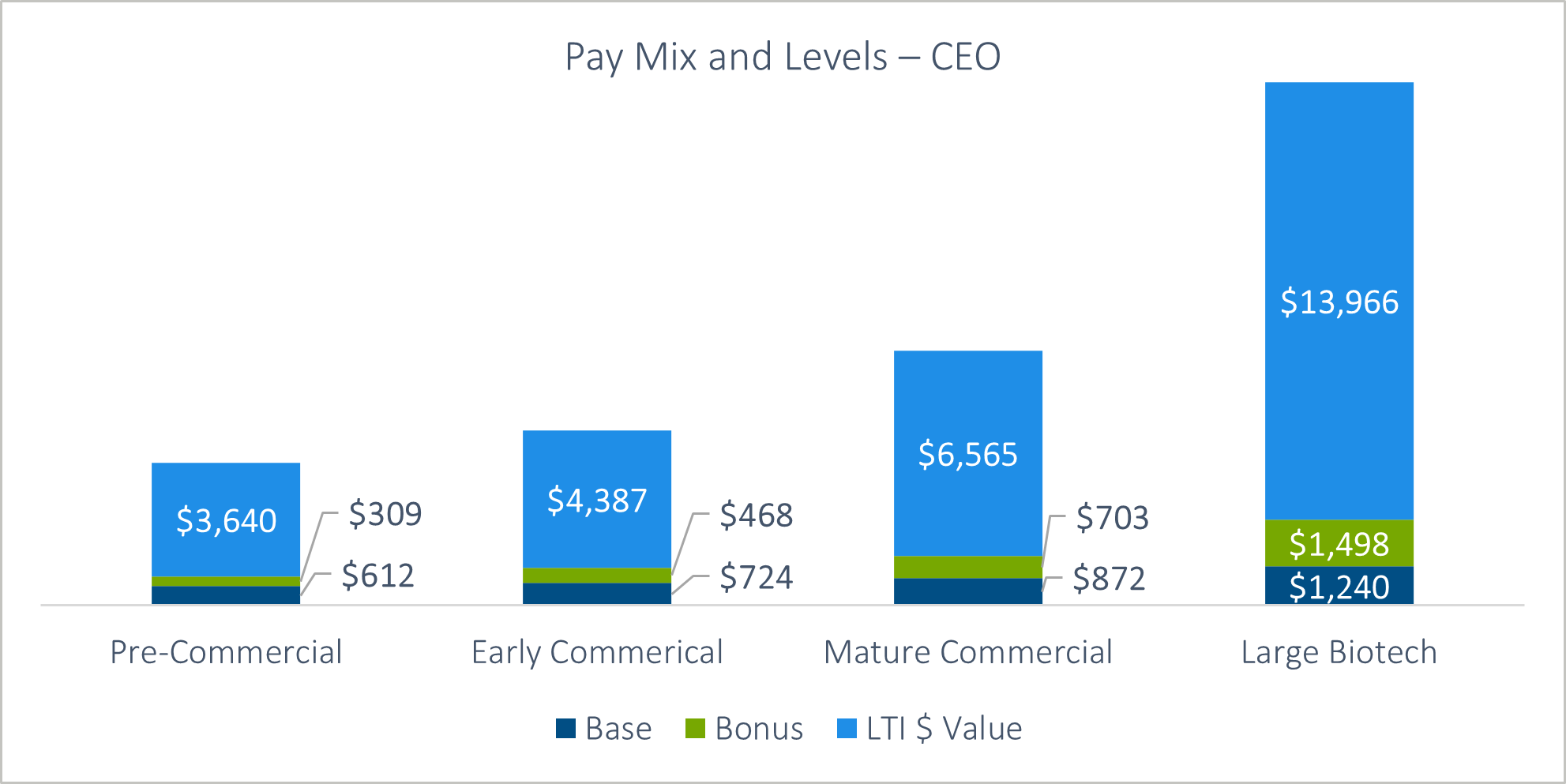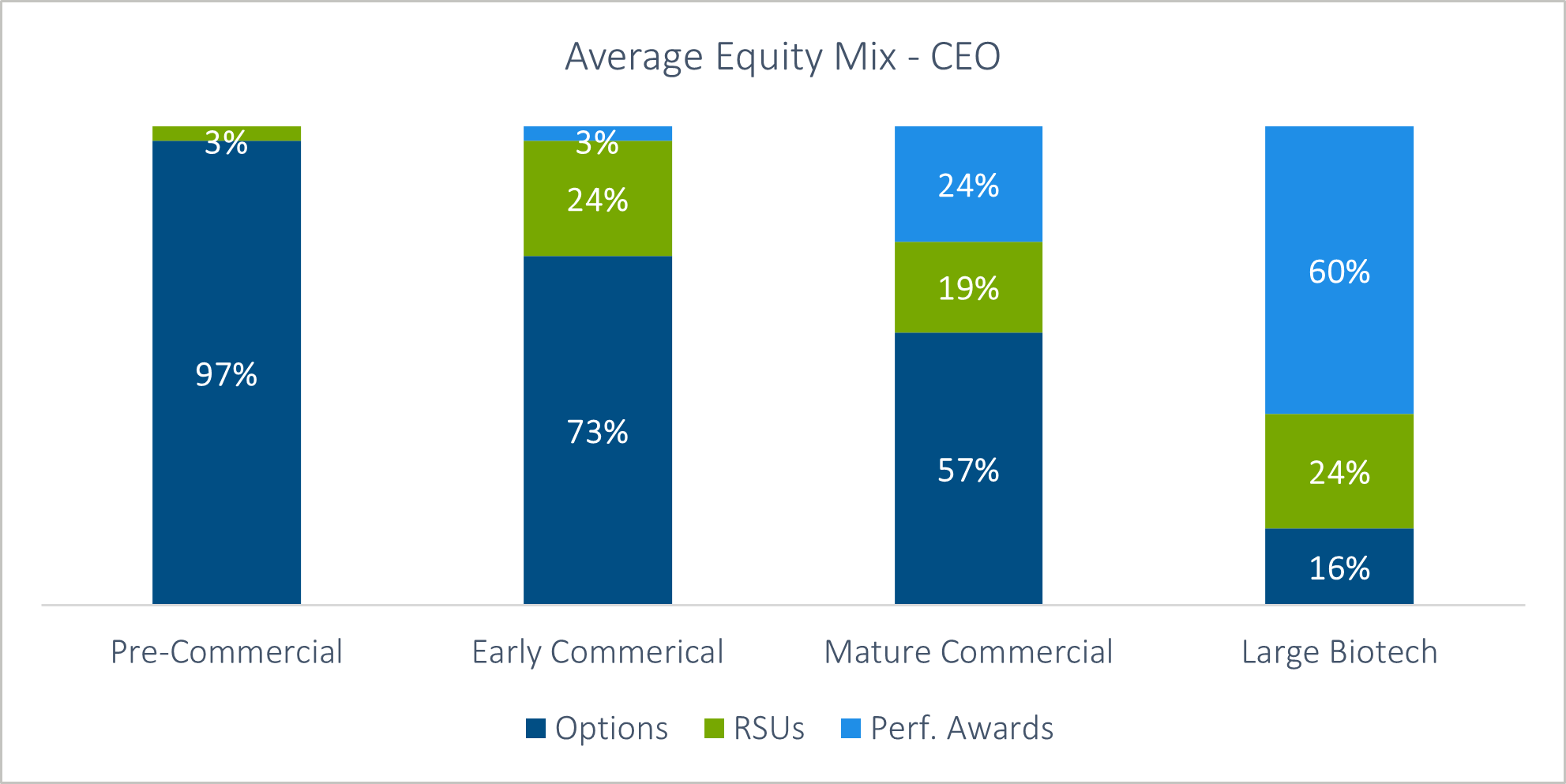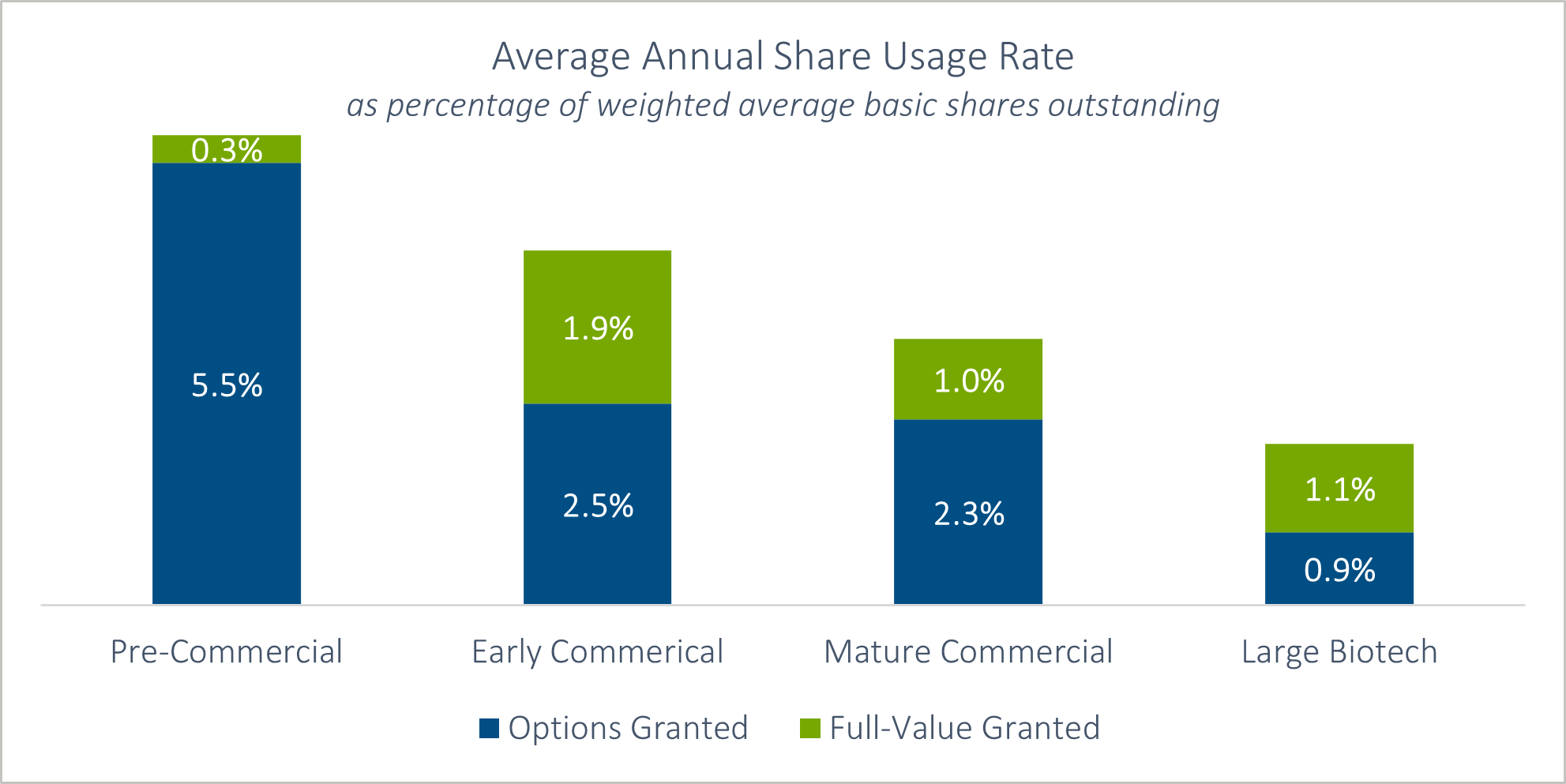
Article | Sep 2023
The Impact of Biotech Commercialization on Executive Compensation
Commercialization is a major step toward growth and profitability, and this change has significant impact on executive pay levels and structure.
As biotechnology firms progress through clinical trials and work toward FDA approval, it is important for boards to consider the impact of commercialization on executive compensation. Commercialization represents a crucial shift in a company’s strategy toward growth and eventual profitability, and compensation committees should take time to understand its likely implications for pay philosophy.
To develop a clearer picture of how the pay programs evolve through the commercialization phase, Pearl Meyer has reviewed the compensation disclosures of various biotech companies at different life-cycle stages, ranging from late-stage precommercial with market caps of approximately $1B and around 100 full-time employees, to large-cap biopharmas with market caps in excess of $20B and headcounts over 3,000. Each of the companies we reviewed generally fit into one the four categories identified below.
Late-Stage Precommercial | Early Commercial | Mature Commercial | Large Biotech/Pharma | |
|---|---|---|---|---|
| Market Cap | $1B | $1.5B | $2.5B | $20B+ |
| Full-Time Employees | 100 | 400 | 450 | 3500 |
| Revenue | $0 | $100M | $400M | $5B+ |
| Phase | III | Commercial since 2020 | Commercial since 2018 | Commercial since 2018 or earlier |
Changes in Compensation Mix and Levels
Not surprisingly, the magnitude of compensation increases as companies move through the various stages of commercialization. With more predictable cash flow and more stable business operations, companies can provide higher salaries and target bonus opportunities built around key financial objectives. While all components of pay increase, we found that equity compensation increases the most at large, established biopharmas, equity compensation makes up roughly 85% of the total executive pay package, compared to roughly 75% in the pre- and early commercial stages.

We also found that the structure of equity grants evolve as companies move through the stages of commercialization. Precommercial companies heavily favor stock options (97% weighting) with broad levels of employee participation, while commercial companies increase their use of full-value shares and may become more selective in the groups they grant equity to. In addition, especially at mature and large biopharmas, we saw increased use of performance shares brought on by more predictable financial performance and pressure from external proxy advisors. When used, performance-based equity is a significant portion of executive equity grants, particularly for the CEO position, where they usually comprise at about 60% of the overall equity mix.

Short-Term Incentive Plan Design
With respect to bonus plan design, management teams at early-stage biotechs are often concerned with process-driven activities to maximize the effectiveness and quality of ongoing clinical trials. These plans also tie a meaningful portion of compensation to non-financial (sometimes qualitative) objectives related to business development, financing activities, or people and culture initiatives. In our experience, there is frequent use of board discretion to adjust payouts due to uncontrollable events.
While some of these features remain in the commercial companies we analyzed, there is more widespread use of defined financial metrics and goals, often related to product revenue or market share, as companies advance. By the time companies reach the mature or large biopharma stage, more sophisticated plan designs built around multiple quantifiable metrics and targets linked to budget are commonplace. Leverage curves also widen and the sensitivity of payouts increases such that bonuses of up to 200% of target can be achieved if highly aggressive financial targets are hit.
Equity Usage
In early-stage companies, equity compensation is the primary tool to incentivize and motivate employees. The increase in value that companies experience with a successful product is often significant, and it is this potential for wealth creation that induces employees to assume the risk of working at an early-stage biotech. Equally, cash is precious at an early-stage company, and most will seek to conserve cash by controlling salary and bonus expenses. As such, it is not surprising that burn rates reduce significantly as companies progress through the stages of commercialization, from 5.8% (precommercial) to 2% (large biopharma) in this study.
While a change in risk profile and business economics affects burn rates, it’s not the only factor. An increase in share value also prompts a shift in equity philosophy such that companies begin to think more about the grant date value of awards as opposed to grant sizes as a percentage common shares. Quite simply, commercial stage businesses can award higher equity values with fewer shares, especially if they use full-value vehicle such as restricted stock units (RSUs).

Closing Thoughts
Commercialization stimulates various appropriate changes in compensation as business strategies and goals advance. We have confirmed that while pay levels increase across all components, equity compensation levels represent the largest increase, in accordance with the increase in company value. At the same time, mature commercial companies can provide higher equity values using fewer shares, which meaningfully reduces shareholder dilution over time. In addition, with more predictable business operations, annual incentive plans can be built around more specific and measurable goals and objectives, and ultimately be more sensitive to company performance. Mature companies also shift their focus away from price appreciation awards like stock options to full-value awards such as RSUs and performance shares.
It is important for compensation committees moving through commercial stages to regularly assess their pay programs against these trends and those observed in their compensation peer group. On that point, taking time on an ongoing basis to ensure that the peer group constituents are at a similar life-cycle stage is a critical step and necessary for optimal results. Be aware that a failure to adjust to these changes over time could lead to uncompetitive pay offerings and subsequent consequences: a loss of key talent and potentially market share.



